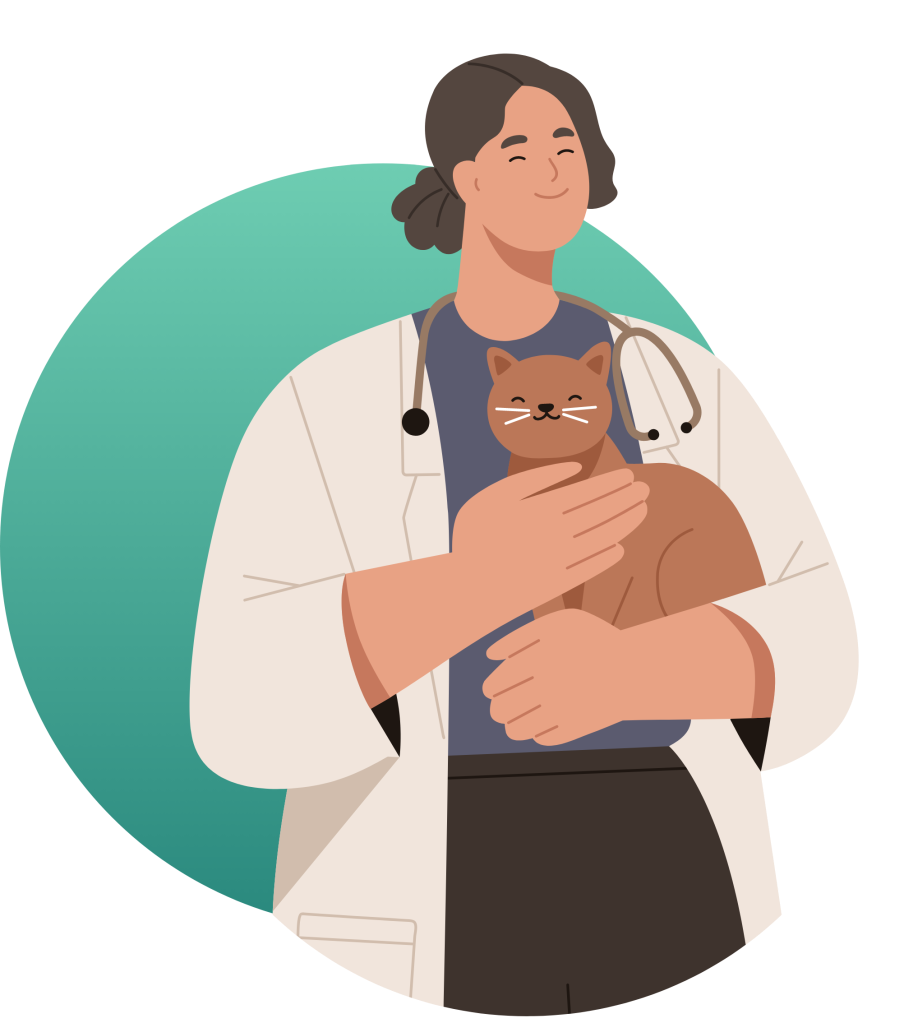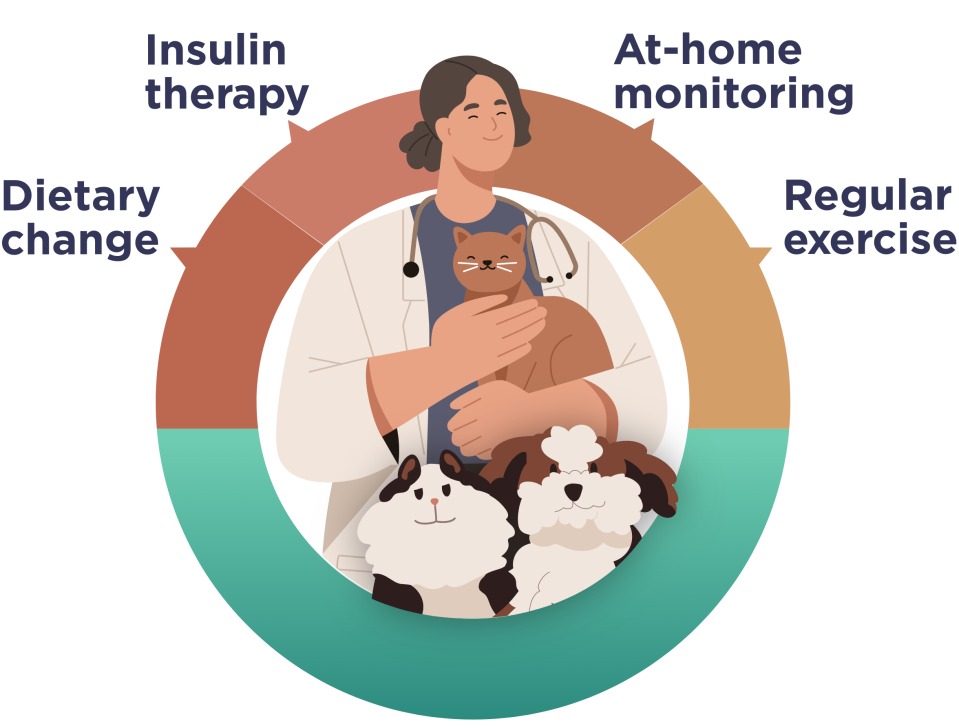

Diabetes
in Pets
TALK TO YOUR VET!

Diabetes is caused by a lack of insulin or insulin not working properly. This prevents the conversion of food to energy, and results in high blood glucose levels, which causes a multitude of health concerns.. Early detection and proper veterinary care can help your pet live a happy, healthy life.

How common is pet diabetes?
Just like humans, dogs and cats can also develop diabetes. It is a common condition, affecting 1 in 300 dogs and 1 in 230 cats1,2
Is my pet at risk for diabetes?
While diabetes has been diagnosed in dogs and cats of all ages and breeds, certain pets are at greater risk of the disease. Here are some of the risk factors.
Dogs
- Age (5 and up)
- Unspayed females
- Certain breeds
Cats
- Age (8 and up)
- Obesity
- Physical inactivity
- Certain breeds

Can diabetes lead to other health problems in my pet?
Yes. Dogs and cats with diabetes can develop other health problems. Controlling blood glucose levels may lead to a healthier life for your pet. This is why a visit to your veterinarian is important for an early diagnosis of diabetes.

What are the signs of pet diabetes?
You know your pet best. Keep an eye on your dog or cat for these signs and contact your veterinarian for support.
Dogs
Urinates frequently and/or in large amounts
Drinks a lot of water
Always hungry
Has lost weight
Sleeps more or is less active
Cloudy eyes
Cats
Urinates frequently and/or in large amounts
Drinks a lot of water
Always hungry
Possible weight loss
Sleeps more or is less active
Dull or dry coat
How do I take care of my diabetic pet?
Your veterinarian can help you develop a management plan and introduce you to tools to help control your pet’s blood sugar levels.


Has your pet been recently diagnosed with diabetes?
Talk to your veterinarian about our Diabetic Pet Parent Support Kit. The support kit provides apps, tools, and resources to help you manage your pet’s condition.

1. Catchpole, B., Ristic, J. M., Fleeman, L. M., & Davison, L. J. (2005). Canine diabetes mellitus: can old dogs teach us new tricks?. Diabetologia, 48(10), 1948-1956.
2. McCann, T. M., Simpson, K. E., Shaw, D. J., Butt, J. A., & Gunn-Moore, D. A. (2007). Feline diabetes mellitus in the UK: the prevalence within an insured cat population and a questionnaire-based putative risk factor analysis. Journal of Feline Medicine and Surgery, 9(4), 289-299.
